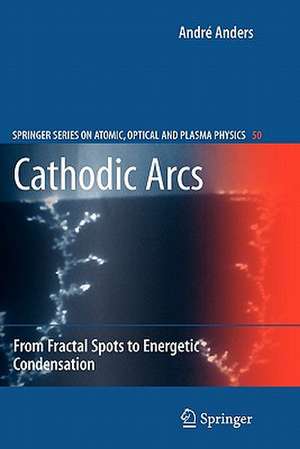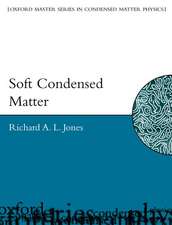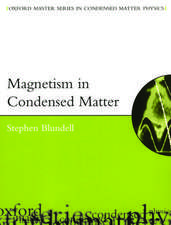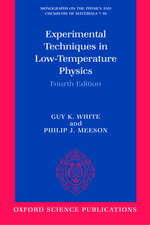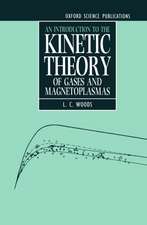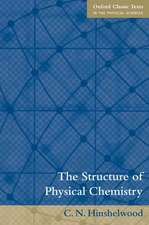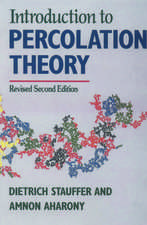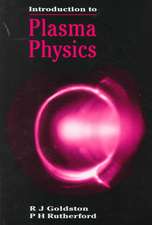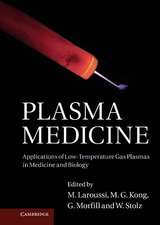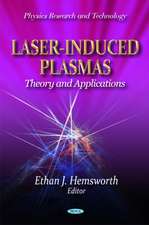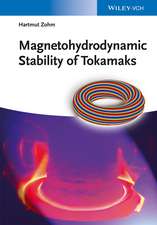Cathodic Arcs: From Fractal Spots to Energetic Condensation: Springer Series on Atomic, Optical, and Plasma Physics, cartea 50
Autor André Andersen Limba Engleză Paperback – 19 noi 2010
| Toate formatele și edițiile | Preț | Express |
|---|---|---|
| Paperback (1) | 1392.65 lei 6-8 săpt. | |
| Springer – 19 noi 2010 | 1392.65 lei 6-8 săpt. | |
| Hardback (1) | 1397.19 lei 6-8 săpt. | |
| Springer – 23 sep 2008 | 1397.19 lei 6-8 săpt. |
Din seria Springer Series on Atomic, Optical, and Plasma Physics
- 18%
 Preț: 1007.65 lei
Preț: 1007.65 lei - 18%
 Preț: 942.63 lei
Preț: 942.63 lei - 24%
 Preț: 833.23 lei
Preț: 833.23 lei - 15%
 Preț: 641.20 lei
Preț: 641.20 lei -
 Preț: 384.86 lei
Preț: 384.86 lei - 24%
 Preț: 810.76 lei
Preț: 810.76 lei - 18%
 Preț: 786.04 lei
Preț: 786.04 lei - 18%
 Preț: 793.94 lei
Preț: 793.94 lei - 15%
 Preț: 649.54 lei
Preț: 649.54 lei - 18%
 Preț: 1023.11 lei
Preț: 1023.11 lei - 18%
 Preț: 1006.87 lei
Preț: 1006.87 lei - 18%
 Preț: 1117.03 lei
Preț: 1117.03 lei - 15%
 Preț: 642.36 lei
Preț: 642.36 lei - 18%
 Preț: 998.82 lei
Preț: 998.82 lei - 18%
 Preț: 781.77 lei
Preț: 781.77 lei -
 Preț: 382.75 lei
Preț: 382.75 lei - 15%
 Preț: 650.37 lei
Preț: 650.37 lei - 18%
 Preț: 792.03 lei
Preț: 792.03 lei - 24%
 Preț: 975.66 lei
Preț: 975.66 lei - 24%
 Preț: 790.67 lei
Preț: 790.67 lei - 18%
 Preț: 945.79 lei
Preț: 945.79 lei - 18%
 Preț: 999.76 lei
Preț: 999.76 lei - 18%
 Preț: 883.90 lei
Preț: 883.90 lei - 18%
 Preț: 784.92 lei
Preț: 784.92 lei - 18%
 Preț: 1006.06 lei
Preț: 1006.06 lei - 18%
 Preț: 882.19 lei
Preț: 882.19 lei - 18%
 Preț: 955.88 lei
Preț: 955.88 lei - 18%
 Preț: 748.77 lei
Preț: 748.77 lei - 18%
 Preț: 1015.23 lei
Preț: 1015.23 lei - 15%
 Preț: 582.12 lei
Preț: 582.12 lei -
 Preț: 390.25 lei
Preț: 390.25 lei -
 Preț: 389.49 lei
Preț: 389.49 lei - 18%
 Preț: 945.79 lei
Preț: 945.79 lei -
 Preț: 384.48 lei
Preț: 384.48 lei
Preț: 1392.65 lei
Preț vechi: 1698.34 lei
-18% Nou
Puncte Express: 2089
Preț estimativ în valută:
266.47€ • 278.25$ • 220.05£
266.47€ • 278.25$ • 220.05£
Carte tipărită la comandă
Livrare economică 15-29 aprilie
Preluare comenzi: 021 569.72.76
Specificații
ISBN-13: 9781441927118
ISBN-10: 1441927115
Pagini: 544
Ilustrații: XVIII, 544 p.
Dimensiuni: 155 x 235 x 29 mm
Greutate: 0.78 kg
Ediția:2008
Editura: Springer
Colecția Springer
Seria Springer Series on Atomic, Optical, and Plasma Physics
Locul publicării:New York, NY, United States
ISBN-10: 1441927115
Pagini: 544
Ilustrații: XVIII, 544 p.
Dimensiuni: 155 x 235 x 29 mm
Greutate: 0.78 kg
Ediția:2008
Editura: Springer
Colecția Springer
Seria Springer Series on Atomic, Optical, and Plasma Physics
Locul publicării:New York, NY, United States
Public țintă
Professional/practitionerCuprins
A Brief History of Cathodic Arc Coating.- The Physics of Cathode Processes.- The Interelectrode Plasma.- Cathodic Arc Sources.- Macroparticles.- Macroparticle Filters.- Film Deposition by Energetic Condensation.- Reactive Deposition.- Some Applications of Cathodic Arc Coatings.
Recenzii
With great interest I learned that the Springer Scientific Publisher has published a monograph entitled "Cathodic Arcs: From Fractal Spots to Energetic Condensation" by Dr. Anders, Leader of the Plasma Applications Group at Lawrence Berkeley National Laboratory, a scientist noted as an expert in physics of vacuum discharges and in discharge-assisted coating deposition technologies. Being closely acquainted with a great number of articles and reviews authored by him and co-authored with scientists from different countries who come to Berkeley to execute research work, I anticipated that such a book would just about to appear because the great body of data amassed by Dr. Anders strongly called for integration. My expectations have been realized, and I would like to express my sincere congratulations to Dr. Anders on the occasion of the appearance of this book.
At first glance the book’s title looks somewhat unusual because all of us, the scientists engaged in this field of physics, has got used to the term "vacuum arc", specifying the arc type by some additional words. It seems that the author uses the term "cathodic arc" to stress that we are dealing with a vacuum arc (or an arc in a low-pressure working gas) during which the working medium is supplied to the discharge gap only by cathode spots. The plasma flow produced from this conducting medium is transferred through a plasma-optical system, which eliminates macroparticles, and eventually it settles on a substrate to form a cathode material coating. I believe that there are all grounds to accept the term "cathodic arc" because it simplifies the description of the phenomenon by treating it as a sequence of events from the initiation of cathode spots and generation of cathode plasma to the settlement of cathode plasma ions on the substrate. This is exactly what the author has done by considering the whole sequence of events from both the physical and the technical viewpoint. This consideration ispreceded by a detailed more than two-century background of this problem.
In my opinion, the book is a contemporary encyclopedia in the physics, engineering, and technology of vacuum (cathodic) arcs and in their use for coating deposition to which the author has made a great contribution. The appearance of this book is an important step toward the advance in high current vacuum electronics and in its up-to-date technological applications. I should like to wish the author further advances in his research work.
Professor Dmitry I. Proskurovsky
Institute of High Current Electronics
Russian Academy of Sciences, Siberian Division
Tomsk, 634055, Russia
At first glance the book’s title looks somewhat unusual because all of us, the scientists engaged in this field of physics, has got used to the term "vacuum arc", specifying the arc type by some additional words. It seems that the author uses the term "cathodic arc" to stress that we are dealing with a vacuum arc (or an arc in a low-pressure working gas) during which the working medium is supplied to the discharge gap only by cathode spots. The plasma flow produced from this conducting medium is transferred through a plasma-optical system, which eliminates macroparticles, and eventually it settles on a substrate to form a cathode material coating. I believe that there are all grounds to accept the term "cathodic arc" because it simplifies the description of the phenomenon by treating it as a sequence of events from the initiation of cathode spots and generation of cathode plasma to the settlement of cathode plasma ions on the substrate. This is exactly what the author has done by considering the whole sequence of events from both the physical and the technical viewpoint. This consideration ispreceded by a detailed more than two-century background of this problem.
In my opinion, the book is a contemporary encyclopedia in the physics, engineering, and technology of vacuum (cathodic) arcs and in their use for coating deposition to which the author has made a great contribution. The appearance of this book is an important step toward the advance in high current vacuum electronics and in its up-to-date technological applications. I should like to wish the author further advances in his research work.
Professor Dmitry I. Proskurovsky
Institute of High Current Electronics
Russian Academy of Sciences, Siberian Division
Tomsk, 634055, Russia
Notă biografică
André Anders is a Senior Scientist and the Leader of the Plasma Applications Group at Lawrence Berkeley National Laboratory in Berkeley, California. He published his first paper on discharges in vacuum in 1984 and has worked in related fields ever since, first with his mentors Burkhard Jüttner and Erhard Hantzsche in East Berlin, Germany, and since 1992 in Berkeley, California. With over 200 publications in refereed journals, he contributed to the field of cathodic arcs and arc-based coatings by extensive measurements of arc plasma properties and the development of miniaturized filtered arc systems for diamond-like carbon, which are today used by the magnetic storage industry. He currently serves in many committees, most notably as the Chairman of the Permanent International Scientific Committee of the Symposia on Electrical Insulation and Discharges in Vacuum.
Textul de pe ultima copertă
Cathodic Arcs: From Fractal Spots to Energetic Condensation is the first book in over a decade dedicated to the physics and technology of cathodic arcs. It includes a detailed account of arc history, a textbook-like introduction to cathode phenomena, and some basic physics of expanding plasmas; it deals with the infamous macroparticle issue and describes a host of practical plasma filter solutions. In contrast to previous books on cathodic arcs, the focus is on the relation of arc plasmas and their properties to surface modification and thin film deposition. The book contains sections on basic plasma physics and thin film materials science. It also deals with practical issues of coatings such as stress control and the often-underrated issue of the coating’s color. By stressing the fractal nature of cathode spots, the theme of fluctuations can be found throughout the book: fluctuations affect all plasma properties and thereby have consequences for plasma-based surface modifications and film growth. Detailed explanations are complemented by compilations of plasma and materials data arranged in Periodic Tables.
Cathodic Arcs: From Fractal Spots to Energetic Condensation is written with researchers and advanced students in the fields of materials science and plasma physics in mind. It is suitable both as a reference work for the expert as well as an introduction for newcomers to the interdisciplinary fields of plasma-surface interaction and plasma-assisted deposition of thin films.
Cathodic Arcs: From Fractal Spots to Energetic Condensation is written with researchers and advanced students in the fields of materials science and plasma physics in mind. It is suitable both as a reference work for the expert as well as an introduction for newcomers to the interdisciplinary fields of plasma-surface interaction and plasma-assisted deposition of thin films.
Caracteristici
An up-to-date account of research related to cathodic arcs and arc-based coatings technology A unique compilation of facts, theory, and data to cathodic arcs Designed as in introduction for the newcomer as well as a reference book for the expert Contains numerous illustrations and references
